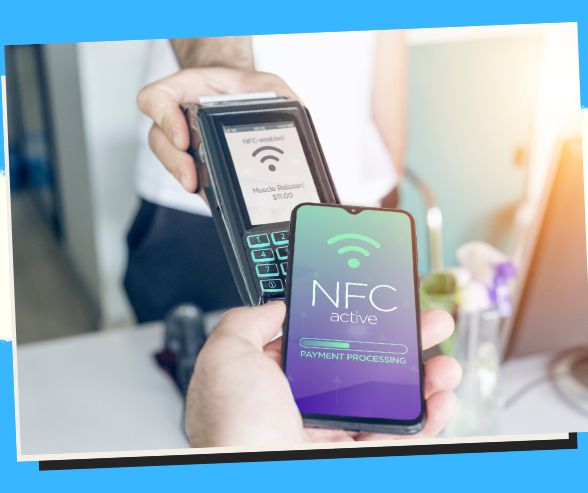
Breaking it Down: P2P Payments vs. Traditional Banking – What Sets Them Apart? 

Beyond the walls of banks, P2P payments present a different financial landscape. Delve into the essential contrasts that set these two methods apart.
Understanding the Distinctions Between P2P Payments and Traditional Banking 

In finance, innovation has led to new transaction methods, with peer-to-peer (P2P) payments being a prominent example. These digital transactions have introduced an alternative to traditional banking methods, offering speed, convenience, and a new way of managing money. In this comprehensive article, we explore the key differences between P2P payments and traditional banking, shedding light on how these methods function, their benefits, drawbacks, security considerations, and how they reshape the financial landscape.
Diving into P2P Payments
1. The Concept 
P2P payments involve directly transferring funds between individuals using digital platforms or mobile apps. This method bypasses the need for intermediaries such as banks and offers a streamlined, instantaneous way of exchanging money.
2. Initiation and Processing 
P2P payments can be initiated and completed swiftly. Users input the recipient’s details, confirm the transaction, and immediately transfer funds. The process is often conducted via mobile apps, web interfaces, or QR code scans.
3. Accessibility and Inclusivity 
P2P payments transcend geographical boundaries, enabling users to send and receive money across borders without the limitations imposed by traditional banking systems. This inclusivity extends to individuals who might not have access to traditional bank accounts.
4. User-Friendly Interfaces 
P2P payment platforms prioritize user-friendly interfaces, making them accessible even to those with limited technological familiarity. Signing up, linking accounts, and executing transactions are designed to be intuitive processes.
5. Splitting Bills and Group Payments 
One of the standout features of P2P payments is the ability to split bills and manage group payments. Friends, family members, or colleagues can easily divide expenses and contribute to shared costs, eliminating the need for complex calculations.
Exploring Traditional Banking
1. The Foundation 
Traditional banking involves established financial institutions such as banks, credit unions, and other authorized entities. These institutions have been pillars of financial systems for centuries, offering many services beyond mere money storage.
2. Transactions and Processing 
Traditional banking transactions often require multiple steps, including visiting a physical branch or using ATMs. Transfers may take longer, particularly for international transactions, due to the involvement of intermediary banks.
3. Geographical Limitations 
Traditional banking can be restricted geographically, especially when dealing with cross-border transactions. Exchange rates, fees, and processing times can pose challenges.
4. Banking Infrastructure 
Traditional banking relies on physical infrastructure, such as brick-and-mortar branches and ATMs. While online banking has become prevalent, the physical presence of banks remains a defining characteristic.
5. Financial Services Beyond Payments 
Traditional banks offer an array of services beyond basic payment transactions. These include savings accounts, loans, mortgages, investment opportunities, and financial advice.
Comparing the Benefits
P2P Payments Advantages:
- Speed and Convenience: P2P payments offer instant transfers, making them ideal for urgent transactions.
- Accessibility: P2P payments are available to anyone with a smartphone and internet access.
- Lower Fees: P2P payments often have lower fees than traditional banking methods.
- Global Reach: P2P payments enable cross-border transactions without excessive fees or exchange rate challenges.
Traditional Banking Advantages:
- Diverse Services: Traditional banks offer comprehensive financial services, including savings, loans, and investments.
- Established Security Measures: Traditional banks have well-established security protocols to protect customer funds and information.
- Physical Presence: Traditional banks provide in-person customer service through branches and ATMs.
- Regulatory Oversight: Traditional banks are regulated by financial authorities, ensuring compliance and consumer protection.
Examining the Drawbacks
P2P Payments Drawbacks:
- Limited Services: P2P payment platforms primarily focus on money transfers and may lack the range of financial services offered by traditional banks.
- Dependence on Technology: P2P payments rely on digital platforms, which can create barriers for those without access to smartphones or the internet.
- Security Concerns: The digital nature of P2P payments may raise security concerns, although reputable platforms implement encryption and security measures.
Traditional Banking Drawbacks:
- Transaction Time: Traditional banking methods can result in longer transaction times, especially for cross-border transfers.
- Fees and Exchange Rates: Traditional banks may impose higher fees and less favorable exchange rates for international transfers.
- Complex Processes: Traditional banking procedures can be more complex, involving paperwork and multiple steps.
Navigating Security Considerations
P2P Payments Security:
- Encryption: Reputable P2P payment platforms employ encryption to protect users’ financial data during transactions.
- Authentication Measures: P2P platforms often implement two-factor authentication and biometric verification to ensure secure access.
Traditional Banking Security:
- Regulation and Oversight: Traditional banks are regulated by financial authorities, ensuring compliance with security standards.
- Fraud Protection: Traditional banks offer fraud protection for unauthorized transactions and often provide reimbursement for losses.
Embracing the Future
P2P payments and traditional banking each offer distinct advantages and drawbacks. As technology advances, P2P payments are set to continue transforming the financial landscape. While P2P payments provide unparalleled speed and accessibility, traditional banks offer comprehensive financial services and established security measures.
By understanding the differences and considering individual needs, users can make informed choices that align with their financial goals. The coexistence of P2P payments and traditional banking exemplifies the diversity and dynamism of the modern financial ecosystem, giving individuals more choices than ever before in managing their financial transactions.
Related Queries










Save/Share this story with QR CODE
Disclaimer
This article is for informational purposes only and does not constitute endorsement of any specific technologies or methodologies and financial advice or endorsement of any specific products or services.
 Need to get in touch?
Need to get in touch?

We appreciate your reading. 
1.) 

Your DONATION will be used to fund and maintain NEXTGENDAY.com
Subscribers in the Philippines can make donations to mobile number 0917 906 3081, thru GCash.
3.) 
4.) 
AFFILIATE PARTNERS

World Class Nutritional Supplements - Buy Highest Quality Products, Purest Most Healthy Ingredients, Direct to your Door! Up to 90% OFF.
Join LiveGood Today - A company created to satisfy the world's most demanding leaders and entrepreneurs, with the best compensation plan today.

 Business, Finance & Technology
Business, Finance & Technology








 Empowering Minds: How AI Augmentation Reshapes Human Capabilities
Empowering Minds: How AI Augmentation Reshapes Human Capabilities 
 Supercharge your skills with the synergy of human intelligence […]
Supercharge your skills with the synergy of human intelligence […]
